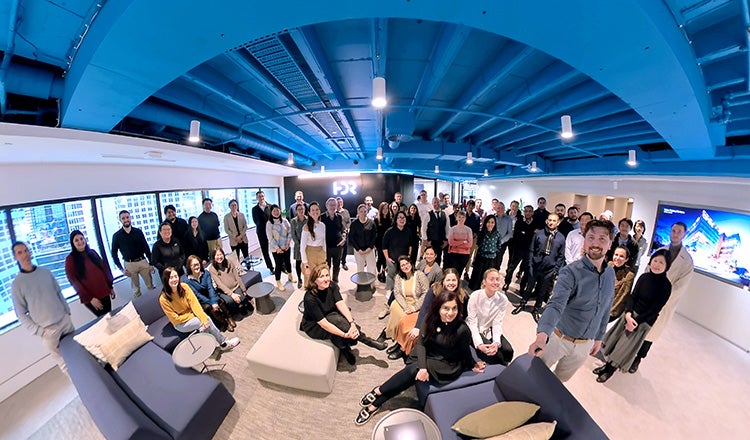
A Social Impact: Designing Solutions to the World’s Greatest Challenges
With global shifts reconfiguring architectural briefs and setting new expectations every day, designers have an immense responsibility to deliver on clients’ evolving aspirations and design for greater social impact. In this climate, architectural innovation and performance has an increasingly influential role to play in improving society’s interconnected social, economic and ecological systems — and shaping positive outcomes for communities, now and in the future.
“The profession has undergone a period of unprecedented evolution since I started out as an architect,” said Simon Fleet, design principal at HDR. “No longer is it just about the physical entity of a building, but about the impact that emerging market drivers are having on urban development and, as a result, our architectural responses.
“By reframing HDR’s design narrative and adopting new digital tools and processes, we can deliver innovative solutions that respond to our clients’ briefs and cater to civilisation’s fundamental, and often complex, hierarchy of needs.”
Fleet postulated that emerging trends would see communities become more dispersed as artificial intelligence continues to loosen ties to physical work locations and workforce needs evolve. With transportation energy use becoming an even more precious commodity, and education and healthcare services being delivered virtually, she also expects that future urban landscapes will be more sustainable and more equitable, irrespective of geographical location, and possibly decentralized. This means they will be less focused around dense CBD areas and more focused around lower density nodes loosely connected to public transport.
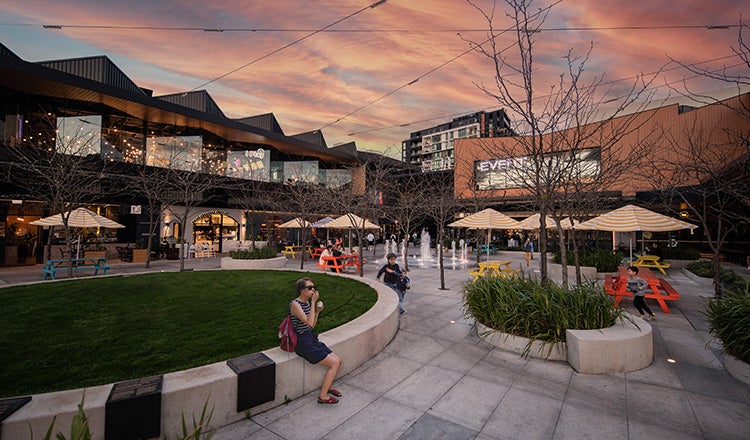
Reversing Inequality
Fleet added that social inequality will continue to inform and transform the trajectory of health, education, science and city-shaping civic projects.
“Sadly, there is an increasing delta between those experiencing prosperity, comfort and opportunity, and those who are facing socioeconomic disadvantage and therefore more predisposed to some of the greatest societal challenges we are collectively facing.
“The global pandemic, climate change and our universal housing affordability crisis has disproportionately impacted many communities who are, for the most part, already susceptible to the unique challenges presented by factors such as their geographic location.”
In this climate, HDR’s capacity to design and deliver equitable, inclusive and resilient social infrastructure like hospitals, schools and town centres will become increasingly dependent on the government’s commitment to meeting the shifting expectations of communities and legislating reforms across health, education, transport and housing.
Fleet predicted that healthcare will be more readily located near growth corridors rather than further consolidating traditional inner-city campuses, and defence projects will be positioned in northern Australia for geographically strategic reasons.
HDR-designed projects such as Health Infrastructure’s Rouse Hill Hospital and Dubbo Base Hospital Redevelopment, the Grand Island Regional Medical Center in Nebraska, and Frasers Property’s Ed.Square Town Centre in southwestern Sydney draw parallels with Peter Calthorpe’s recent book, "Ending Global Sprawl: Urban Standards for Sustainable and Resilient Development.” In the book, he examines the supporting role that robust community-oriented and wellness-driven infrastructure can play in reversing social isolation, economic inequality and environment degradation.
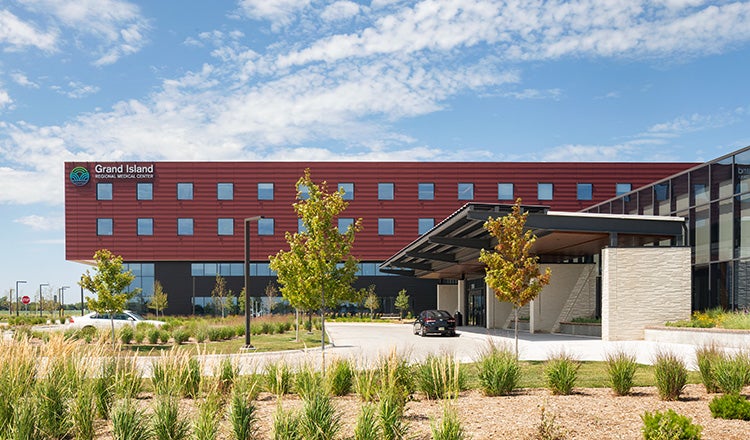
A Security Overlay
Fleet then took this dialogue one step further by considering the impact that social destabilisation and polarisation are having on geopolitical landscapes across the globe.
“Profound social inequality is inextricably linked to the global instability we are experiencing right now, which is in turn placing an increased focus on our national security, whether that be physical security — through defence facilities — or cybersecurity.
“Our climate emergency, too, has a national security overlay. Factors such as resource scarcity, economic scarcity and overpopulation are exacerbating the global dispute over land, food and sustainable places to live, and thereby putting pressure on the resilience of our defence infrastructure.
“Inequality stems from a complex web of contiguous factors, whereby a chain reaction can have a cumulative effect on everything that safeguards our nations.”
In this increasingly complex geopolitical climate, Fleet expects that Australian architects will have increasing opportunities to support their Pacific neighbors who are already highly vulnerable to many of the social inequalities at play.
“As a prosperous, resilient and largely isolated island nation, strategic alignment with our global and regional neighbours will become more and more paramount.
“And this is already filtering into our work for the Department of Defence. We are now expected to deliver on Australia’s Defence enterprise priorities at a never-seen-before pace, which is being made possible using our suite of in-house computational design and manufacturing tools that enable rapid construction of high-quality modular buildings in remote locations.”
HDR’s Australian practice is tapping into its global defence, science and technology exchange across the U.S., U.K. and Europe to deliver globally competitive base redevelopments, capability facilities and operational and training environments that build workforce attractiveness in a market of talent shortage.
Setting coordinates for the future of the sector are projects such as the Riverina Redevelopment Program, a $1.8 billion project designed by HDR and GroupGSA that stretches across three Defence establishments and delivers a variety of building typologies to meet the demand for recruits and trainees.
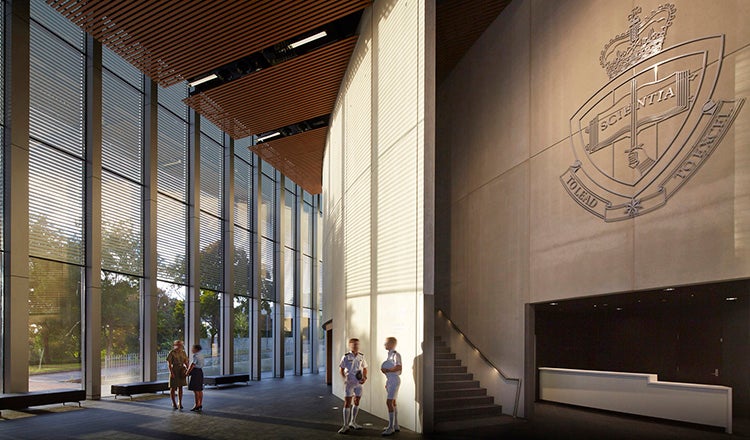
Technological Transformation
Fleet suggested that technological acceleration and, more specifically, the emergence of AI will empower architects to deliver highly technical and complex social infrastructure projects at speed and arm designers with tools that can more holistically measure and respond to some of our most pressing ecological, social, cultural and financial challenges.
“There hasn’t been a major technological breakthrough in decades, but AI has the potential to be completely transformative in the same way that electricity or railroads were 150 years ago.
“We are witnessing a convergence of factors that will have a perpetual impact on the design industry. Increasingly powerful machine learning text-to-image and text-to-video models, for example, could revolutionize the way we communicate design intent and help us to create innovative building blocks that help humanity thrive in a new world order.”
Fleet explained that instead of drawing master plan options one-by-one, AI-driven rapid optioneering and evaluation can now efficiently revise repeatable elements, test fit for optimal building stock utilisation in a campus or determine the maximum attainable solar power in a solar farm with the most efficient layout in minutes.
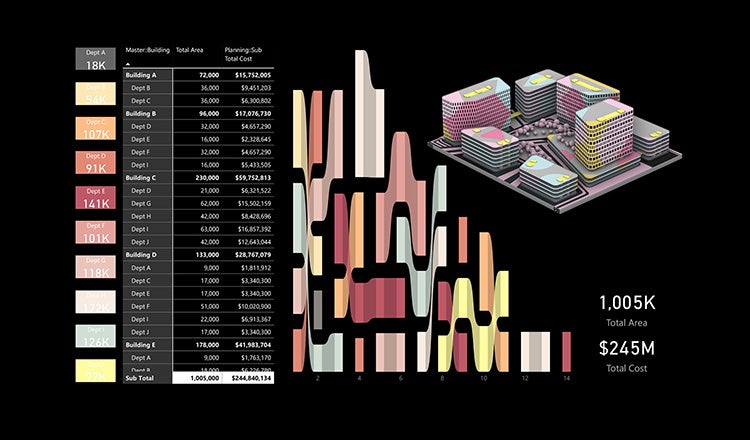
The potential of digital-driven tools and applications like digital twins is being realized across academic health campuses such as The Pavilion at the Hospital of the University of Pennsylvania; innovation precincts such as University of Sydney’s Biomedical Accelerator, vertical universities such as Western Sydney University’s Bankstown City Campus; and transit-oriented developments such as Toronto’s Ontario Line Subway.
“It’s difficult to imagine what impact AI is going to have on so many different spheres of human endeavor,” Fleet said. “Human ingenuity, coupled with technology, will, I think, unlock new ways of designing healthier, more equitable and regenerative buildings.”
A Consultative Approach
When it comes to designing societal solutions in lockstep with clients and stakeholders, Fleet and the team believe that to move the dial and solve complex challenges, architects need to prioritize the changing needs of clients while also advocating for the kind of design outcomes that will have the biggest long-term societal impact.
“Ultimately, our role is to profile what a more sustainable precinct or neighborhood could look like or ways that we can create more housing by infilling the gaps in our street,” Fleet said. “We can’t drive outcomes alone, but the onus is on us to be educated around our emerging market forces, so we can design innovative solutions in partnership with our clients and colleagues.”
Fleet added that while we can shape and influence some of our greatest societal challenges around the edges, it’s going to require a whole-of-society, top-down approach if we are to truly tackle some of our most pressing issues like climate change and social equity.
With mandatory sustainability reporting soon to be introduced in Australia and the Government Architect of NSW advocating for change through policies and frameworks, such as the Design Guide for Health: Spaces, Places and Precincts and Connecting with Country Framework, Fleet believes that governments, clients and communities are gradually embracing opportunities for incremental change.
![Sydney Biomedical Accelerator [Image credit: Denton Corker Marshall]](/sites/default/files/2023-10/sydney-biomedical-accelerator-d750-440.jpg)
A Lasting Legacy
And when asked about HDR’s own social impact, their response was twofold.
“We can make small changes through our own supply chain, how we choose to travel and how we source power for example, or we can leverage our operational impact through philanthropic support that benefits the communities in which we live and work — which is what we do with our HDR Foundation and HDR Australia Fund,” Fleet said. “But our biggest impact is, of course, through our projects and the type of work we choose to take on. Our go/no-go process assesses each project against our own set of social impact metrics, which focus on a regenerative future, community well-being and the transformation of design delivery.”
“I think our lasting legacy is also realized through our people,” he added. “Ultimately, our people are the ones designing the solutions to societal challenges and having a tangible impact on the communities, professions and industries we serve day-in and day-out. Their commitment to achieving social equity cannot be underestimated.”
As seen in Architecture and Design.
